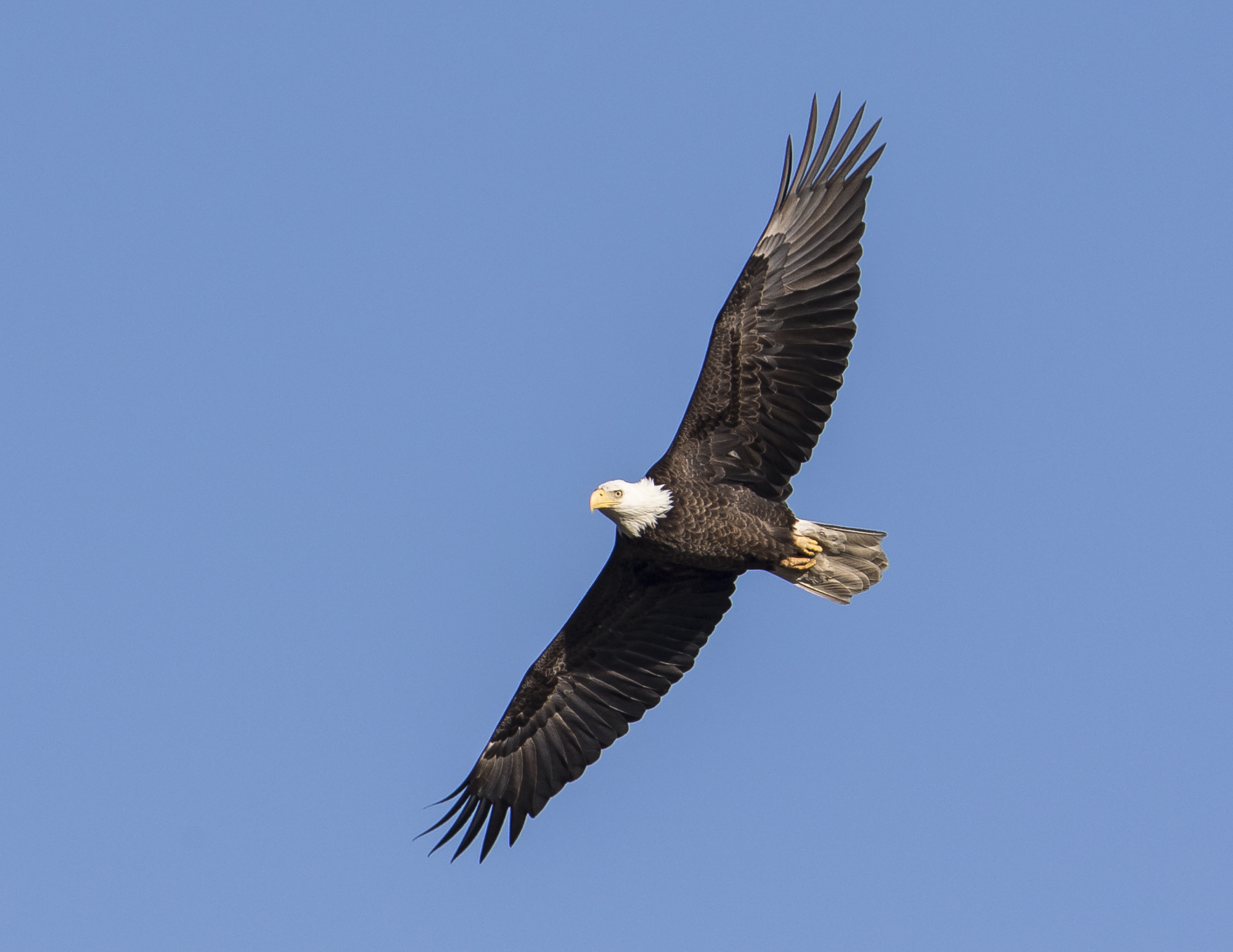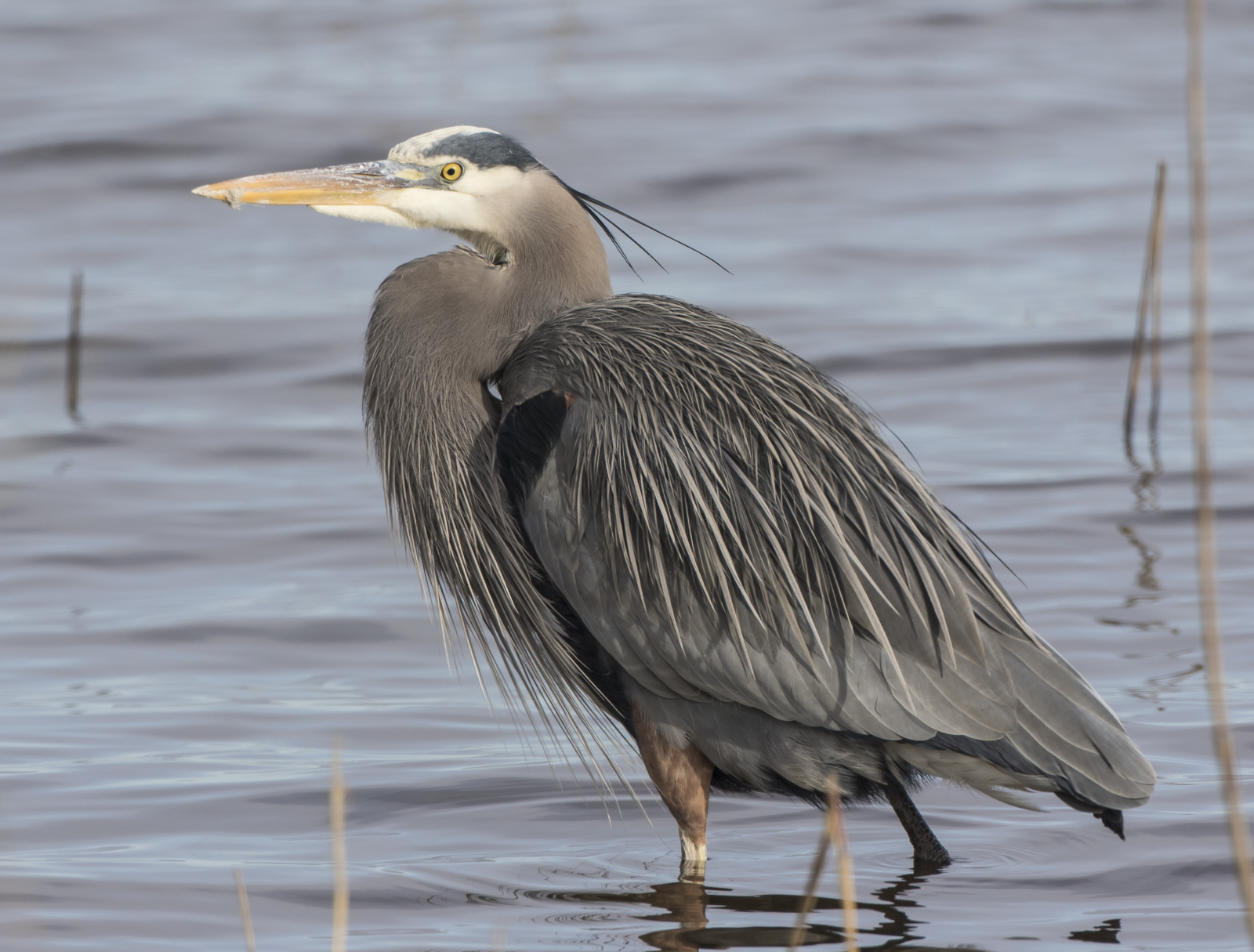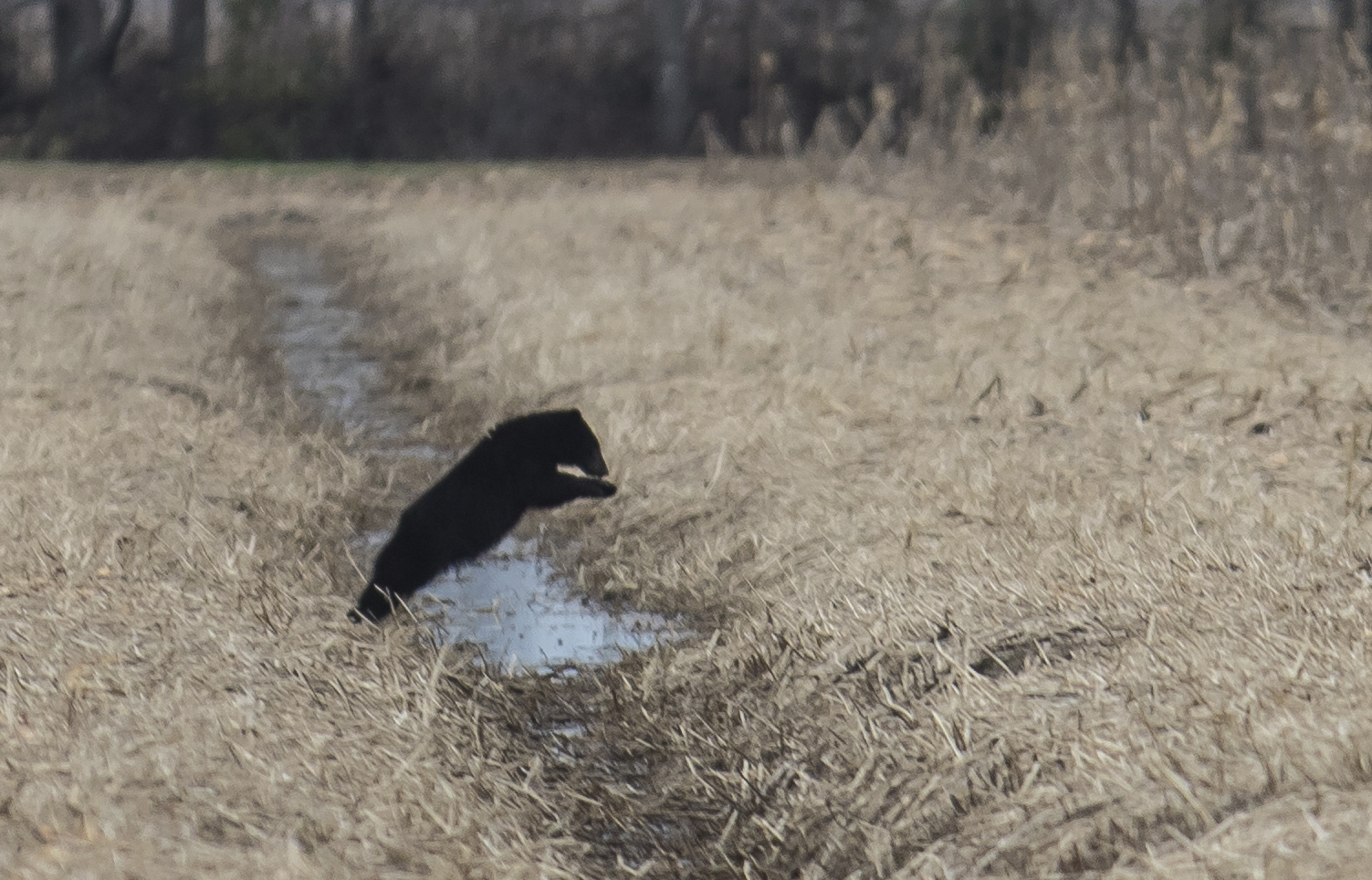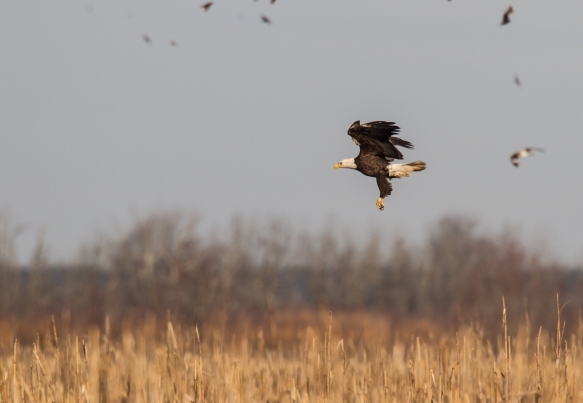I know he’d be a poorer man if he never saw an eagle fly.
~John Denver
A couple of weeks ago I made a trip over to the B. Everett Jordan Dam about 25 minutes from our house. I had seen a lot of images recently on social media of the Bald Eagles that tend to congregate there every winter and thought it was worth a visit. From what I have heard, you generally can observe at least a few eagles, but photography opportunities can be quite variable depending on the number of eagles present and how far down the waterway below the dam they are hanging out and fishing. My plan was to go fairly early, stay a couple of hours, and then head home before lunch to attend to the many chores that awaited.
When I arrived, there were already a handful of photographers strung out along the bank and a couple of fishermen. A tree near the office was decorated with numerous vultures of both local species.

When I arrived at about 8:30 a.m., there were probably 50+ vultures hanging out in trees near the dam, awaiting the warmth of the sun to create some thermals so they could become airborne (click photos to enlarge)
Looking downstream, I could see (and hear) a large number of Bald Eagles roosting in trees on both sides of the tailrace. I counted over 40, many more than were there last year when I visited.

Several trees downstream had multiple eagles perched in them
What really thrilled me were the sounds – so many eagles calling! Here is a short clip of a pair with others calling nearby (turn volume up).
It wasn’t long before eagles starting flying up and down the tailrace, and the morning light was spectacular.

The intensity in an eagle’s eye says it all
There was a mix of juvenile and adult eagles, along with lots of flying Turkey and Black Vultures, the latter species sometimes making you look twice at it to make sure it wasn’t an eagle (similar flat-wing profile at a distance).

Juvenile Bald Eagle showing its darkish head and splotchy underside. Adult plumage (white head and tail) usually occurs by year 5 of a Bald Eagle’s life. A one-year old eagle has a dark head and beak. Two- and three-old eagles are a little tougher to distinguish and can overlap in their plumage patterns. I think this might be a 2-year old bird – a lot of white on its belly, very splotchy underside of wings, and some feathers sticking out of line in the trailing edge of its wings resulting from a combination of older feathers and new shorter wing feathers. However, the little lighter coloration on top of its head shows how variable these plumage patterns can be at this age.

I am guessing this is probably a 2- or 3-year old eagle since it is has some yellow on the beak and some white patches on the underside. Notice here that the trailing edge of the wings is fairly uniform, unlike the previous photo.

Most likely a 4-year old Bald Eagle – mainly white head but with dark splotches, still a trace of dark on the tail feather tips, much more yellow on the beak, and less white on the underwings
During lulls in the eagle action, there were plenty of other birds to observe and photograph. Vultures, of course, and a bunch of Great Blue Herons along the banks and in nearby trees.

A Great Blue Heron provides a nice photo target as it flies by
I was impressed that the herons here have added a new tactic in their fishing repertoire. In addition to the usual stalk and strike, I saw them frequently fly out and snag a fish off the water surface, sometimes landing out in the deep water and then seemingly struggling a bit as they took off with their prize.

A Great Blue Heron flies out and grabs a fish that has passed through the dam
The other fisher-birds on the scene were several Double-crested Cormorants. Though often diving to catch a fish, they were also taking advantage of injured fish that passed through the dam that could be seen floating at the surface. A patrolling cormorant would spot one and rush over and grab it, often with several other cormorants ready to do the same if the first one missed.

A Double-crested Cormorant grabs a fish

If it can, the cormorant will manipulate the fish and gulp it down headfirst, with a visible downward-moving swelling in its neck as the meal is swallowed
On many occasions, however, the fish is just too big to swallow. Crappie (the dominant species I saw floating by) are fairly deep-bodied so it can be tough for a cormorant to get the whole fish down.

A cormorant has grabbed a crappie, but is struggling to swallow it as another cormorant lurks nearby

Oh so close…

I saw this many times, the bird tries to swallow a fish and finally has to drop it
If the cormorants don’t swallow the fish right away, the eagles perched nearby or soaring overhead take notice.

This adult Bald Eagle does a quick turn and heads toward a group of cormorants trying to secure a fish meal.

As the eagle closes in, the cormorants scatter with water drops flying through the air. The eagle flies just above the surface, talons lowered and ready to grab the cormorant’s would-be dinner.
Eagles are excellent fishermen and can grab a fish in full flight mode (which I found very challenging to capture).

I kept missing the shot of the moment an eagle grabs the fish but managed a few just after the capture. Often they were pretty far away so these pictures are heavily cropped (taken with my 500mm and a 1.4x teleconverter)

I moved around during the day and found my best shots were when I was down by the water surface

The moment right before an eagle’s talons hit the prey. Look at that concentration!

The eagle’s rarely missed, but when they did, I often saw the fish go flying through the air

A Bald Eagle is well-adapted to grab slippery prey like fish – the talons are strongly curved and the bottom of their feet have rough projections that help hold the prey firmly

After securing its catch, the eagle turns and quickly flies up to a tree branch to eat its meal

Bald Eagles can see 4 to 5 times better than a human. That somewhat angry look is due to a bone (the supraorbital ridge) that juts out over the eye. It probably helps shield their eyes from sunlight. Here you can see the transparent nictitating membrane which sweeps across the eye from the side and helps protect the eyes
What started out as a planned two hour photo trip to see eagles turned into an all day event that had me twisting and turning at times to try to catch the action as eagles flew by and swooped down to snag a fish. It was a thrilling day of observing some of the large concentration of Bald Eagles that call Jordan Lake their winter home. I made another trip a week later with friends, but there were far fewer birds below the dam. The water depth in the tailrace was much higher as more water was being released through the dam, so maybe that had something to do with it or maybe it is the approaching warm weather. As spring arrives, the eagle numbers dwindle, but there will still be quite a few that nest in the area, so get out around the lake and see if you can observe some of these majestic birds in action. And when the Ospreys return next month, watch for eagles trying to steal fish from their raptor cousins, always an aerial display worth seeing. Just remember to not pressure these birds (or any wildlife) so much as to cause them to get stressed and move on.

A majestic adult Bald Eagle in beautiful late afternoon light at Jordan Lake













































































